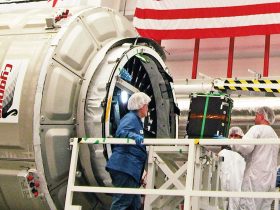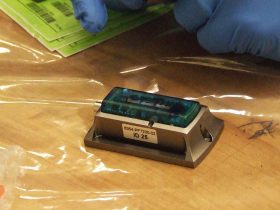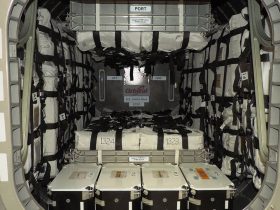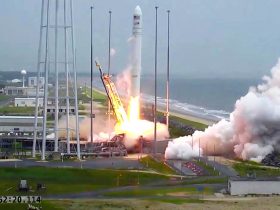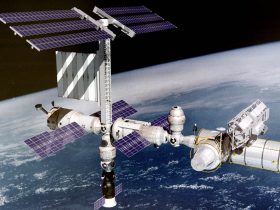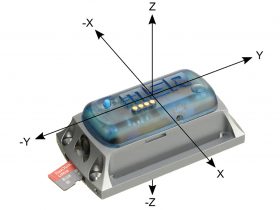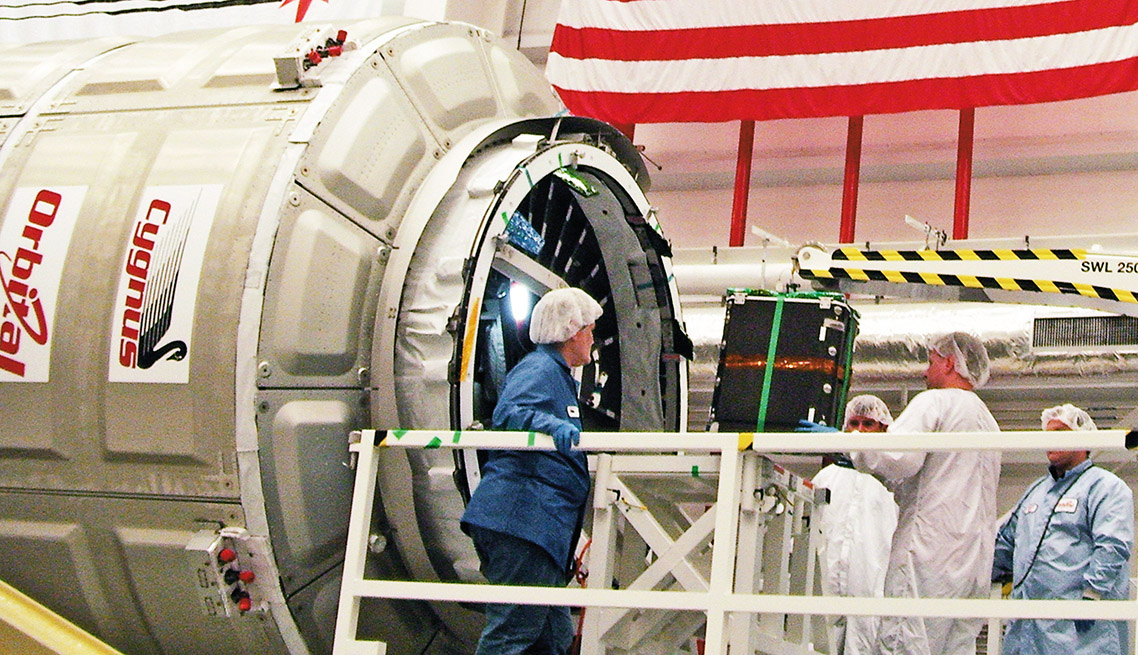
MSR Shock Data Loggers Monitor NASA Transport
MSR165 data loggers on their way to the International Space Station ISS
For the fifth consecutive time, the miniature data logging devices of MSR Electronics GmbH are accompanying the flights of the unmanned cargo spacecraft „Cygnus“ to the International Space Station ISS to take transport measurements.
The G-forces which are generated by the acceleration of the unmanned supply spaceship during take-off, place a high load on the cargo and can be critical for sensitive goods.
«We are getting truly spectacular data from these tiny data loggers», says Michael Bain, ISS Cargo Integration and Operations Services Manager of the Orbital Sciences Corporation. On 18 September 2013, the US-based Orbital Sciences Corporation sent its spacecraft «Cygnus» for the first time on its journey to the International Space Station ISS. Alongside SpaceX, Orbital Sciences is one of two private U.S. companies taking supplies to the International Space Station for the U.S. space agency NASA. Since NASA discontinued its shuttle program in 2011, it no longer has its own space fleet.
MSR Data Logger for monitoring of the cargo compartment
A two-stage launch rocket of the type «Antares» took the unmanned spacecraft from Orbital 2013 into space for its first test mission. On board the Cygnus were not only cargo such as consumables (food, clothing, science support, medical supplies, space operations support, periodic maintenance items, etc.), as well as spare parts, crew support, and science facilities, but also 10 MSR165 data loggers equipped with 3-axis acceleration sensors from Swiss technology company MSR Electronics GmbH. The aim of the measurements was to record the data for shocks and vibrations during the entire transport route as some of the cargo is particularly sensitive in reacting to stress, especially during the start of the launch rocket. MSR165 data loggers with their highly sensitive sensors are especially suitable for use in spacecrafts, because they can autonomously carry out and store precise measurements for long periods and also because they are very light and small in size.
During the test mission the Cygnus spacecraft docked at the International Space Station for 23 days and left the space station again thereafter. The data recorded by MSR data loggers were successfully evaluated by Orbital. On 9 January 2014, the next mission to the ISS (Orb-1) was already completed, and again with 10 MSR Data Loggers on board Cygnus. In mid-July 2014 the Orbital-2 mission was launched. Michael Bain describes the process for the MSR data loggers as follows:
Strict assessment procedure
«Batteries used in the MSR data loggers are individually tested and numbered at NASA’s battery test facility at Johnson Space Center in Houston, Texas. Tested batteries are shipped to MSR Electronics GmbH in Seuzach near Zurich and installed during initial production. Each unit delivered from MSR Electronics GmbH to Orbital is serialized and certified to contain a NASA-tested battery. Each data logger is checked out and activated at Orbital Sciences Corporation in Dulles, Virginia, and then transported by plane or by car to the launch site, Wallops Flight Facility on Wallops Island, along the cost of Virginia. Once activated and prepared, they are installed in predetermined locations: in cargo bags, under cargo bags, between cargo bags, on equipment lockers, and on various structures within the Pressurized Cargo Module (PCM).»
For the Orbital-2 mission, the MSR data loggers were again programmed to detect and record spacecraft acceleration’s during launch and during all flight events up to berth with the International Space Station on-orbit. On orbit, the data loggers were retrieved from the module by the ISS crew as cargo is unloaded, as the ISS Cargo Integration and Operations Services Manager explains: «The data loggers are bagged for storage on-orbit. If the crew has time, the micro memory cards are removed from the loggers and the data files are down-loaded to a Personal Computer onboard and then transmitted to the ground. If the crew does not have the time available – which hasn’t happened yet – the units can be returned to the ground on an ISS return mission and shipped back to Orbital to read out the data. Orbital takes the data, compares it against models and mission specific predictions and then submits an analysis of the loads seen by the cargo during the cargo delivery mission to NASA as proof that the systems operated as advertised.»
Bain summarizes: «We are able to track virtually every physical event that occurs on the spacecraft from roll-out to the launch pad, to rocket rotation to the vertical, to ignition, launch, main engine cut-off, stage separation, upper stage ignition and burn-out, fairing separation, … even the movement of the spacecraft while attached to the space station arm. We are getting our money’s worth, thanks to the hard work of the folks at MSR.»
Mission update Orb-3:
At press conference, Orbital Sciences had to confirm that about six seconds after liftoff at 6:22 PM ET, the Antares rocket exploded in mid-air. Fortunately, no people were aboard and no one was injured. The cause of the explosion is currently unknown.
Mission update OA-4:
Successful launch: Having been postponed three times, Orbital Sciences’ unmanned Cygnus space shuttle was successfully launched into space on Sunday, 06/12/15, carrying supplies for the International Space Station (ISS). Data loggers by MSR Electronics for shock and vibration measurements are on board for the fifth time.
Swiss Television SRF: Travelling in space: with MSR data loggers
These pages might also be of interest to you:
- Product overview MSR data loggers for transport, logistics
- MSR175plus shock data loggers monitor transport of grinding machines
- Acceleration measurements: Vibration, jolts, shock: Determination of acceleration values with MSR145, MSR165, MSR175 and MSR175plus data loggers
- Use of MSR165 data loggers in a CTI research project for risk assessment for shock and vibration immissions
- Wegmüller AG: Transport monitoring with MSR data loggers
- Uroviva Services AG, transport monitoring of highly sensitive medical technology
- MSR data loggers provide information about transport loads on goods of all kinds
- Determination of acceleration values with MSR145, MSR165, MSR175 and MSR175plus data loggers
 Deutsch
Deutsch

